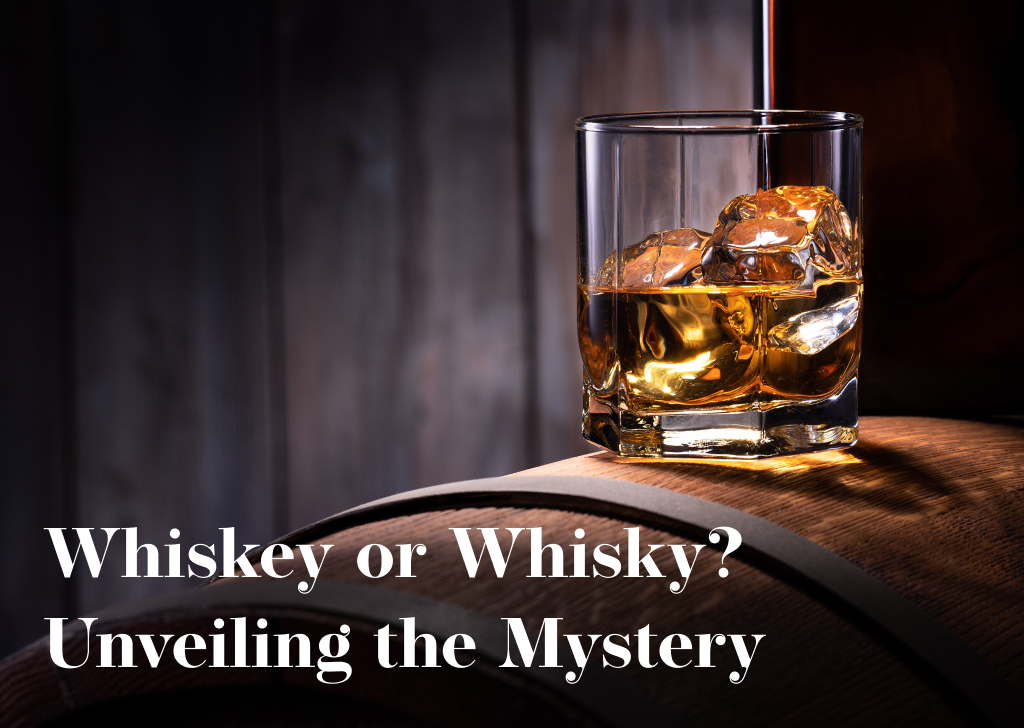The debate between “whiskey” and “whisky” is more than a matter of spelling; it’s a reflection of history, geography, and tradition. This distinction marks the spirit’s origin and tells a story of its heritage and craft. Let’s delve into the origins, the nuanced differences, and some intriguing facts about this beloved spirit.
Historical Roots and Spelling Significance
The spelling divergence—whisky without an ‘e’ in Scotland, Canada, and Japan, and whiskey with an ‘e’ in Ireland and the United States—traces back to linguistic and geographical lines. Scotland, the bastion of whisky, has been perfecting this distilled beverage since the 15th century, with its production methods and traditions shaping the global understanding of what whisky should be.
In contrast, the Irish and Americans adopted “whiskey” to differentiate their products. The Irish whiskey industry, equally ancient, wanted to distinguish its smoother, triple-distilled product from the Scottish version. This distinction became more pronounced as American distillers, many of Irish descent, began crafting their unique styles, further cementing the spelling difference.
Geographic Nuances and Production Styles
The spelling also hints at the spirit’s production nuances. Scotch whisky is renowned for its single malt and blended varieties, each requiring malted barley and aging in oak barrels for at least three years. This process imbues Scotch with its characteristic depth and complexity.
Irish whiskey, known for its smoothness, often blends malted and unmalted barley in its triple distillation process, offering a lighter, more approachable profile. Meanwhile, American whiskey, including bourbon and Tennessee whiskey, must contain at least 51% corn and age in new charred oak barrels, giving it a distinctive sweetness and robustness.
Beyond Tradition: Global and Innovative Perspectives
The whisky/whiskey realm extends far beyond these traditional producers. Japan has emerged as a powerhouse, blending Scottish techniques with unique local qualities to create whiskies that have garnered international acclaim. Similarly, countries like India and Australia are carving out their niches, expanding the whisky landscape with innovative approaches and ingredients.
Distilleries worldwide are pushing the boundaries of traditional whisky-making. From experimenting with alternative grains to aging spirits in previously used barrels—from port to IPA beer—these innovations enrich the whisky/whiskey spectrum, offering enthusiasts a wider range of flavors and experiences.
The Cultural Tapestry of Whisky and Whiskey
Whisky isn’t just a beverage; it’s a cultural icon, weaving together stories of heritage, craftsmanship, and innovation. Its significance transcends mere consumption, symbolizing moments of celebration, reflection, and connection. Whisky festivals, tastings, and collector communities thrive across the globe, celebrating the spirit’s rich diversity and shared passion.
Whether you prefer the peaty intensity of a Scotch whisky, the smooth charm of Irish whiskey, or the bold flavors of American bourbon, the world of whisky/whiskey is a testament to the spirit’s enduring appeal. Each variety tells the story of its land, people, and traditions, inviting us on a journey of discovery and enjoyment.
In the end, whether spelled with an ‘e’ or without, whisky/whiskey remains a cherished spirit that captivates the senses, bridges cultures, and brings people together. Its rich tapestry of styles, traditions, and innovations continues to evolve, promising new tastes and experiences for connoisseurs and casual enthusiasts alike. Discover your new favorite whisky (or whiskey) from around the world at New Hampshire Liquor & Wine Outlet.
